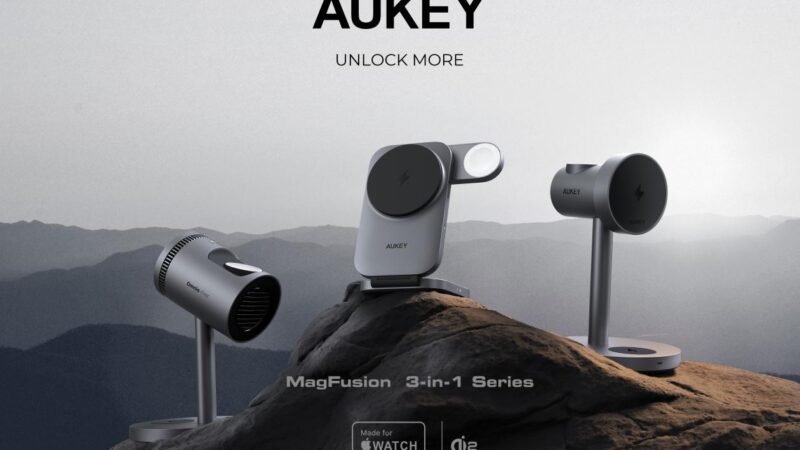How to Get Google Chrome Dark Mode on iOS, Android and Windows

Google Chrome has had dark mode for quite some time, and it’s great. However, its availability isn’t consistent across all platforms yet, which can be frustrating if you want to switch between them regularly. Luckily, there are ways to get Google Chrome dark mode on iOS, Android and Windows devices if you follow these simple steps!
On Mac
To get started with dark mode in Chrome on your Mac, open the app and click on the three dots in the top-right corner. From there, select Settings, then scroll down to the Appearance section. In the drop-down menu next to Theme, select Dark. If you want to go back to light mode at any time, just follow these same steps and select Light instead. Now that we’ve gone over how to enable it for a desktop browser, let’s explore how to activate it for mobile browsers. On iOS: Open up the settings for Safari and tap on Safari View Controller. Under Content Blockers (scroll down), toggle Enable Content Blockers on if it isn’t already. Find an option called Chrome Mobile (Add from App Store) and install this content blocker from the App Store by tapping Install Now. Then when you launch Safari again, find Chrome Mobile under Content Blockers and make sure it’s enabled by tapping its green button. Next, go to chrome://flags/#enable-android-night-mode in your browser and flip the switch at the top of the screen. With that done, simply type chrome://flags/#enable-nightly-optimizations into Chrome’s address bar and press Enter. Tap Allow on the pop up window asking for permission to access night mode settings before navigating away from this page. Once all is set, restart Chrome on both your iOS device and computer or just wait 15 minutes for it to update automatically — after which you should be able to see some visual changes when opening new tabs! The first difference you’ll notice is that the background has changed from white to black and text will now appear white against the black background. Just like the Mac version, if you want to turn off dark mode anytime, navigate back here and change theme preference. Additionally, you can use these shortcuts to quickly access your preferences: On PC – CTRL + SHIFT + B – For keyboard shortcut
On iPhone/iPad – Type ‘chrome://flags’ in safari URL bar
On Android – Type ‘chrome://flags’ in the browser URL bar Now onto Android devices — because so many different devices have different ways of changing themes, I’ll cover general guidelines rather than specific instructions. When going through the process below, remember to pay attention to each prompt as they are needed. Make sure your browser is updated before starting this process and you have Allow Mock Locations enabled in Developer Options; both steps are required. If these steps don’t work for you, refer to Google’s documentation on Chrome Night Mode on Android and do things manually. Once you’ve made it to the last step, enter the URL chrome://flags and you should see a screen pop up on the left hand side. Look for the section titled Android and hit Enforce Android Dark Mode. Afterward, try to go to a website. It should show the site in dark mode now. Like other platforms, on Windows you need to head over to the options menu and pick either Theme -> Dark or Theme -> Light. You may also tweak the appearance to your liking by selecting Menu -> Customize and choosing a color for the text, fonts, icons and links. Regardless of the platform you’re using, it’s worth noting that dark mode helps your eyes adjust to lower brightness levels while using less battery power. What are you waiting for? Give it a go today! If you have any questions, feel free to comment and ask me anything. Happy surfing!
On Mobile
To get started, open up the Google Chrome app on your device. Tap the three dots in the top-right corner of the screen to open the menu. From there, select Settings. On the Settings page, tap Themes. You should now see a dark mode option. Tap it to enable dark mode in Google Chrome. In order for this to work properly, you’ll need to set the device’s display brightness at 50% or below. If that doesn’t work, try turning off auto-brightness settings by going into the phone’s general settings and then selecting Display & lights. Next, under Automatic Brightness make sure that Automatically adjust is turned off. If you don’t have that setting available, go to Settings > General > Accessibility > Display Accommodations > Auto-Brightness and turn it off. One thing to note is that if you use night mode (which is similar but has different presets), these steps will override night mode until you disable them again. Night mode and dark modes are separate features with different sets of accessibility options. For example, while night modes may have adjustable tint levels, light levels and other color options, dark modes may not necessarily include those same features. With that said, if a website supports either of these themes individually but not both (or if the website only offers one theme), enabling night mode would give better results than enabling dark mode since it includes more adjustments. While all browsers have some form of dark mode, Google Chrome is unique because it also allows users to customize the type of dark mode they want. Users can toggle between Light, Medium, Dark and Custom. Custom lets users customize what colors they want to turn black so that all sites match their needs perfectly!
In addition, Google Chrome’s implementation of this feature is noteworthy because its design makes an effort to be inclusive and accessible. Unlike other browsers which often add custom buttons on top of websites, Goggle Chrome uses overlays so as not to obscure any content. Plus, when you activate its toggle switch (found in Settings > Themes) all sites automatically update without any disruption in service. These adjustments make browsing the web easier on our eyes, even if we’ve been using bright white backgrounds all day. And finally, in contrast to other browser’s inability to provide enough customization options, Google Chrome boasts four variations of dark mode: Light, Medium, Dark and Custom. Choose whichever one suits your needs best!
On Windows 10
Right-click the desktop shortcut for Google Chrome and select Properties. In the Shortcut tab, look for the Target: field. At the end of the field, add –force-dark-mode. The field should now look something like this: C:\Program Files (x86)\Google\Chrome\Application\chrome.exe –force-dark-mode. Click Apply then OK. Double-click the shortcut to launch Chrome with dark mode enabled. You can also create a desktop shortcut by following these steps. Go to your Google Chrome app folder in the start menu. Copy and paste the app’s location into a new shortcut file using Ctrl+C on PC or Command+C on Mac. Open up Notepad or TextEdit and paste in C:\Program Files (x86)\Google\Chrome\Application\chrome.exe –force-dark-mode, then save it as an executable file (.exe) so you can double click it just like any other executable file that has already been created. Finally, right click your newly created shortcut and rename it so you know what it does when you want to switch back to normal mode later. On iOS: Go to Settings -> General -> Accessibility -> Display Accommodations -> Color Filters -> Smart Invert Colors -> Off. On Android 7 Nougat and below: Follow the same process described above for Windows 10 (right-click shortcut, find target). On Android 8 Oreo and above: Follow the same process described above for Windows 10 (right-click shortcut, find target). A better solution is available on Android 8 Oreo and higher: Go to Settings -> Display -> Night Light and tap the toggle under Automatic Brightness settings. To make adjustments manually, go to Settings -> Display -> Night Light and adjust accordingly. For example, if you’re feeling sleepy and don’t want the screen to turn off automatically because it’s still light outside – move the slider leftwards until it says Sunset. Likewise, if you’re feeling alert at night and don’t want the screen to turn off automatically because it’s still bright outside – move the slider rightwards until it says Sunrise. Note that Night Light will only be effective after sunset or before sunrise depending on which side of the globe you live on. As soon as the sun sets where you are, Night Light will change to warm colors and use less blue light in order to help keep your brain from thinking it’s daytime.
On Other Browsers
Getting dark mode on other browsers is pretty easy. For example, on Firefox you just have to go into the settings and turn it on. On Safari, you have to enable it in the experimental features menu. With Chrome, however, things are a bit more complicated. One thing you can do is download the Chrome Canary or Dev version of the browser. These versions give you early access to new features before they’re available for regular users. Another option would be to install an extension like Crank in’ Out The Midnight Sun that does the work for you. It changes the color scheme of your browser depending on whether it’s daytime or nighttime, without having to manually switch between modes yourself. The best part? You don’t need any technical knowledge at all. All you have to do is install the app and customize its options based on what time zone you’re in. The app will take care of everything else.







